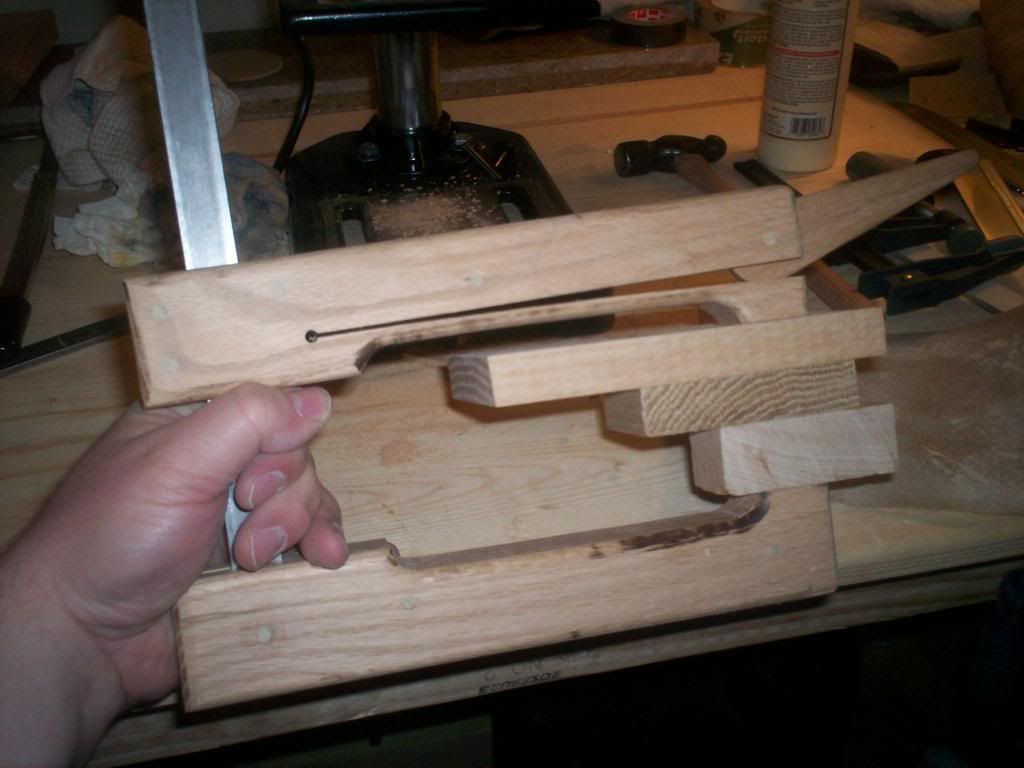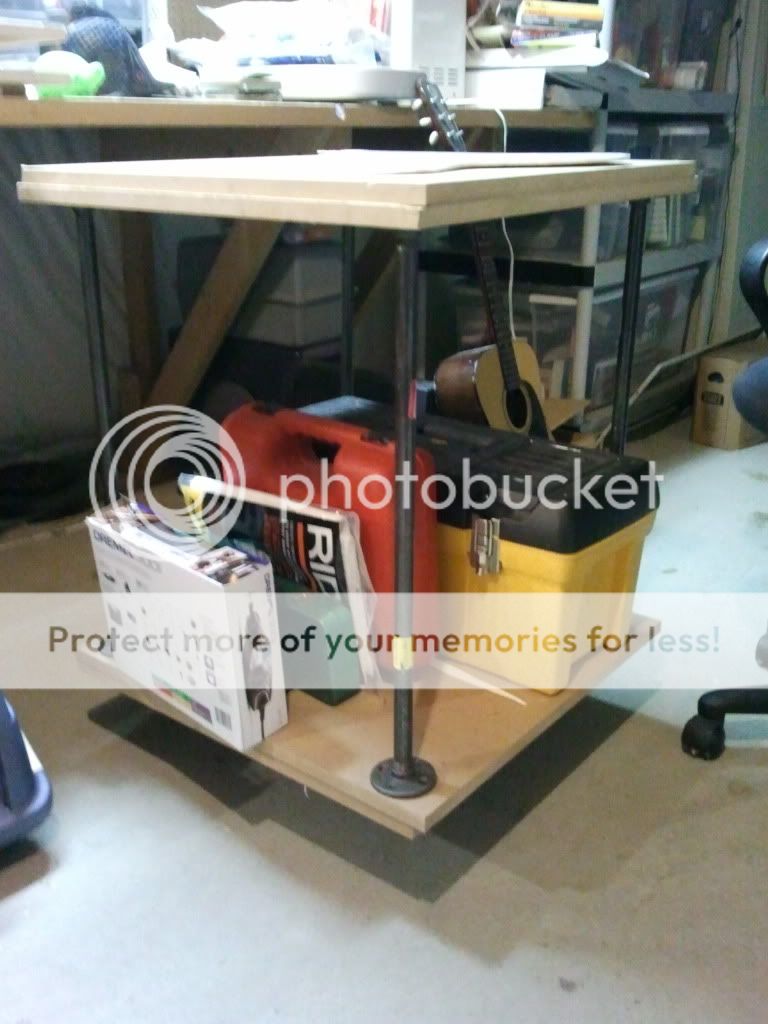
 |
|
#136
|
|||
|
|||
|
Quote:
If the bar-ends of the clamp are squeezed together and the padded jaws in full contact and parallel, throwing the cam doesn't involve a large displacement of the tongue of the upper jaw and little change in angle of the jaws. Last edited by charles Tauber; 02-24-2014 at 10:37 PM. |
|
#137
|
|||
|
|||
|
Quote:
Or maybe "tone" is not the right word. Aspects such as note attack, swell, sustain, decay, overtones, low, mids, highs I believe can be attributed to the woods used. Maybe one could say that the back and sides can be built so ridgid that they cannot vibrate and contribute to the sound. But I believe that the certain properties of back and side woods, regardless of how they're used, affects the way the top vibrates. So I think this happens irregardless of how one perceives a guitar to "sound" at least to his or her ear. Another thing to consider is the guitar you played may have not had the chance to "open up;" it may have not been played much, it could be the setting or room... I've heard rosewood guitars that sound like 12 strings with reverb though there are only 6, then I've heard rosewood guitars that sound rather dark. it would be tough to make a judgment based on playing one guitar, or better yet, listening to someone else play the same guitar. I've played guitars that sound crappy but somehow sound great recorded, and vice versa. Quote:
Last edited by LouieAtienza; 02-24-2014 at 11:37 PM. |
|
#138
|
|||
|
|||
|
Quote:
__________________
-- Nick |
|
#139
|
|||
|
|||
|
Quote:
While cauls are used in go-bar decks (and I use thin cauls for things like backstrips and rosettes) they are of a more flexible variety, and you can use a higher density of go-bars which makes for a better glue-up. So in effect you can have more evenly distributed clamping force. The other reason to use cauls in a go-bar deck is to prevent marring of the wood surface. Of course I'm not stopping you from doing so! And I had the same attitude about this, but I speak from my limited experience; when I built my first go-bar deck I had to smack my head repeatedly, wondering why I never built one in the first place! |
|
#140
|
|||
|
|||
|
Quote:
You've made me think Louie. Never a bad thing, but... decisions, decisions. Don't know which way to go. But, for grins a giggles at the least, I finished my first cam clamp. Well, they still need some cork or leather on the jaws, but it works great. They don't produce the world's largest amount of clamping pressure, but then that's not their purpose. Now, if I decide to go the cam clamp rout, I just need like 10-15 more of them.  
__________________
-- Nick |
|
#141
|
|||
|
|||
|
Well not totally impossible, but almost ridiculous!
You can make both, as both are beneficial to have! You NEVER have enough clamps. Afer making one cam clamp, I ended up purchasing bar clamps. I did have a few as I used to have a cabinet shop, but most of them are too long for guitar work. I still have a box of long carriage bolts and wing nuts to make those spool clamps I've been putting off for the last 5 years.... |
|
#142
|
|||
|
|||
|
[QUOTE=Viking;3837292]I would also need a radiused work dish, which I have been planning on building without. I'd need a more robust router and the proper routing bit, plus the jig to cut the dish. Then I would build the go-bar deck. Doing what I am doing now may take a little more time, but it will take less money. I may chose to build with a go-bar deck in the future, but for now, I think this is where I'm going to stay. I can also use the cam clamps for gluing the back and top to the sides.
 on that. I use shims on a flat board I see no need for a radius dish. Go bar decks are a vary old tool. Radius dishes are new. Prewar guitars that every one loves so much, to the best of my knowledge were glued on a flat surface. My go bar deck is one of my least expensive tools. I precarve the radius into the brace and when the top comes out of the deck it has the radius.  Having cam clamps would be real nice for gluing the bridge, although I built a little jig that uses no clamps at all for doing that made out of long small diameter bolts and nuts that fit through the string holes and wood. There's a web site that sells them but it costs about a dollar to build it yourself. Save your money for a good chisel you'll need it when you carve those braces. If you use a cheap one you will have to extremely causious to not damage the top. Or your fingers ! Last edited by gpj1136; 02-26-2014 at 12:34 PM. |
|
#143
|
|||
|
|||
|
Go bar deck: run slats of wood between the top of your bench and the ceiling. If need be reinforce the ceiling with a piece of plywood screwed to it or the joists.
When finished, the go bar deck disappears, taking no space but to store the slats (go bars). |
|
#144
|
|||
|
|||
|
Quote:
Quote:

__________________
-- Nick |
|
#145
|
|||
|
|||
|
Quote:
I made a newer, more permanent one using leftover aluminum extrusions and two circular bases. One side is dished and one side is flat. When I have company at my shop it doubles as a beer table! |
|
#146
|
|||
|
|||
|
Quote:
I know of someone who made a "radius" dish by taking a circular piece of plywood, added a raised rim out of 1/2" plywood, and a circular piece of 1/4" hardboard or masonite that was screwed at the center toward the first layer of plywood. While not a true spherical section, the difference is so small he didn't notice it, and it was simple to make. I probably would glue down a circle in the center about 4-5" in diameter so it has more of a parabolic shape instead of a hyperbolic shape. |
|
#147
|
|||
|
|||
|
Quote:
__________________
-- Nick |
|
#148
|
|||
|
|||
|
Quote:
On my current one, I have 24" between decks. I did this purposely because I am pretty cheap by nature(!) and this allows me to get full use out of regular stock and dropoffs. |
|
#149
|
|||
|
|||
|
I made one out of two sets of two 3/4" x 24" x 24" pieces of MDF glued together and used steel pipe with steel collars for the supports. Since my workbench is pretty cluttered it doubles as a short work table and storage unit. For gobars I chose to use hardwood trimmed to varying lengths. I can't recall offhand how tall the whole thing actually is but even sitting on a small mover's dolly it fits beneath my main workbench with a good 6" to spare.
  All told I think it cost less than half of what LMI sells theirs for. I don't have radius dishes though and I was advised not to radius the upper transverse brace on my soundboard either.
__________________
(2006) Larrivee OM-03R, (2009) Martin D-16GT, (1998) Fender Am Std Ash Stratocaster, (2013) McKnight McUke, (1989) Kramer Striker ST600, a couple of DIY builds (2013, 2023) |
|
#150
|
|||
|
|||
|
Interesting. Who advised you not to radius the transverse brace?
__________________
-- Nick |